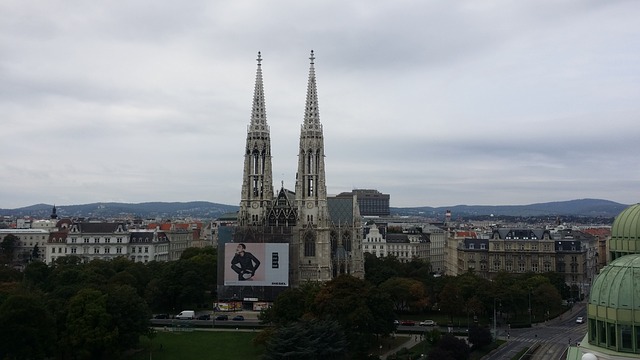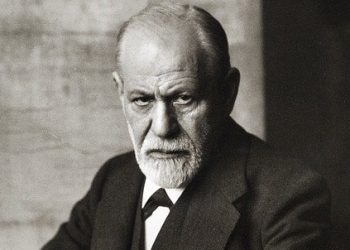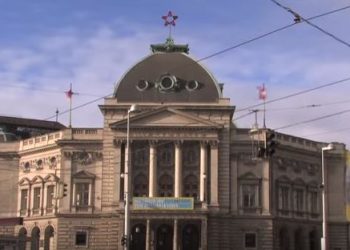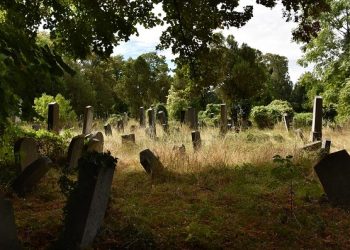The Votive Church is an architectural asset to the city of Vienna and is considered one of the most important churches in the world due to its Neo-Gothic architectural style. It is a stunningly beautiful church that sometimes does not receive the appreciation it deserves, despite being one of the first buildings constructed near the Ringstrasse. The Votive Church is also the second-tallest church in Vienna, right after St. Stephen’s Cathedral.
Following twenty years of renovation, the Votive Church now radiates renewed splendor. Services are held on Sundays at 11:30 a.m. in multiple languages, so it’s possible to pass by and peek into the magnificent structure. Around the church, there is a wonderful park, and during the summer, comfortable chairs are scattered for the benefit of visitors.
Why was the Votive Church built?
The Votive Church was built after a serious event in the Habsburg monarchy, which, had it ended differently, could have led to a great disaster. It was built as a token of thanks to God after the failure of the assassination attempt on the Emperor in 1853.
The assassination attempt took place near the Hofburg Palace as the Emperor was taking a leisurely walk along the ramparts, accompanied by one of his aides, Count Maximilian Karl Lamoral O’Donnell von Tyrconnell. As he was walking, one of the palace employees, a tailor’s assistant, lunged from behind and stabbed him with a long knife. Fortunately for the Emperor, his royal attire was lined with gold, which blunted the blow and prevented his immediate death. The Emperor was left bleeding but was quickly rushed to the palace and received the necessary medical treatment. The assassin, a Hungarian nationalist named János Libényi, was quickly and bravely apprehended by Count Maximilian and a passerby named Dr. Joseph Ettenreich and was executed in the following days.
Count Maximilian was awarded a title of honor in the kingdom for his bravery, as was Dr. Ettenreich.
After the assassination attempt, his brother Maximilian raised numerous donations from about 300,000 people from all over the empire for the construction of a magnificent votive church.
The Construction Period
The construction of the church was led by a young architect named Heinrich von Ferstel, who was chosen from among 75 architects as part of an architectural competition held in 1854. He chose to build it in the Neo-Gothic style, incorporating many elements from French Gothic cathedrals. Because of this design, many mistakenly think that the church is in the original Gothic style.
Construction began in 1856 and lasted for 23 years until 1879, the year the Emperor celebrated his silver wedding anniversary with Sisi. The bricks used for the church’s construction are the same type of bricks used to build St. Stephen’s Cathedral. This type of brick is very delicate and sensitive to the elements. Due to the similarity between the churches, many think they were built at the same time, but in fact, the gap between them is about 700 years!
A beautiful park, now called Sigmund Freud Park, was built around the church.
During World War II, the church was damaged by bombing and required extensive renovations.
The Design of the Votive Church
The church structure includes a variety of features of the Gothic building style. Two tall towers with a large and splendidly decorated window between them, a decorated roof with colorful tiles, and a multitude of stone carvings on all the exterior walls. Inside the church, there is, of course, the magnificent altar area, the transept, and the preacher’s pulpit. The church’s interior is very large and, due to the relatively low lighting, it is quite dim.
The Museum in the Church
Inside the church, there is a museum with ancient exhibits in the Gothic and Neo-Gothic styles related to its construction process and its function as a center of religion and faith. The most impressive exhibit is the Antwerp Altar, the construction of which began as early as 1460.
Opening Hours:
- Tuesday to Friday: 3:00 PM to 5:00 PM
- Saturday: 2:00 PM to 5:00 PM
Entrance Fee:
€8 per person
Essential Information for Visiting the Church
On Sundays, a service is held, so the church is open from 9:00 AM to 1:00 PM. From Tuesday to Saturday, it is open from 10:00 AM to 6:00 PM for worshippers.
How to get to the church?
The easiest way to get to the church is by subway. Take the U2 line (the purple line) and get off at the Schottentor – Universität station. You should exit the station through the exit that leads to the university. As soon as you are on the street, you cannot miss the church on your right. From the subway station, you have to walk for about 5 minutes to reach the church.
Besides the subway, you can get to the Schottentor station using tram lines D, 1, 71, 37, 38, 42, 43, 44.
Address: Rooseveltplatz, 1090 Wien
Map:
Near the church, there are several wonderful historic buildings that are worth visiting afterward. The closest building is the old university building, located right next to the Schottentor station on the Ringstrasse. From there, a short walk will take you to the City Hall and, opposite it, the National Theater of Austria.



















